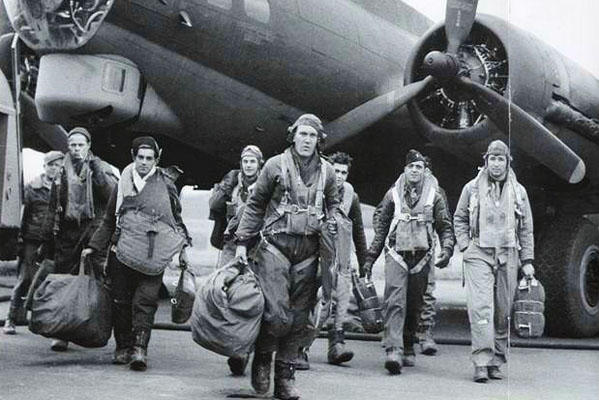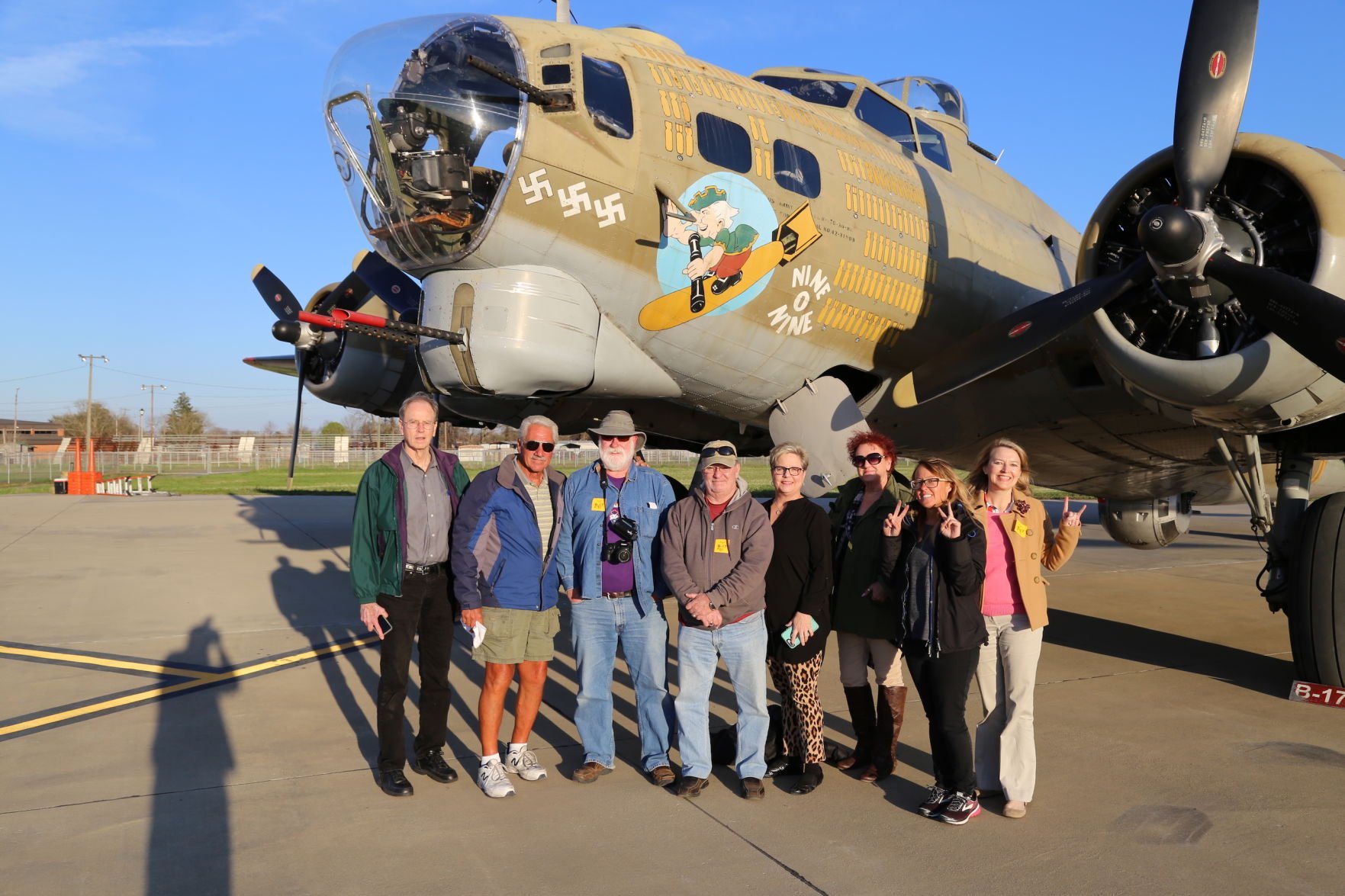

The day before, Richard Williams, a reporter for The Seattle Times, coined the name "Flying Fortress" when – observing the large number of machine guns sticking out from the new airplane – he described it as a "15-ton flying fortress" in a picture caption. The first flight of the Model 299 was on 28 July 1935 with Boeing chief test-pilot Leslie Tower at the controls. The aircraft was powered by four Pratt & Whitney R-1690 Hornet radial engines, each producing 750 hp (600 kW) at 7,000 ft (2,100 m). 30 caliber (7.62 mm) machine guns, with a payload up to 4,800 lb (2,200 kg) of bombs on two racks in the bomb bay behind the cockpit. It combined features of the company's experimental XB-15 bomber and 247 transport. Gifford Emery and Edward Curtis Wells, and was built at Boeing's own expense. The prototype B-17, with the Boeing factory designation of Model 299, was designed by a team of engineers led by E.

The competition for the air corps contract was to be decided by a "fly-off" between Boeing's design, the Douglas DB-1, and the Martin Model 146 at Wilbur Wright Field in Dayton, Ohio.

They also desired, but did not require, a range of 2,000 mi (3,200 km) and a speed of 250 mph (400 km/h). Requirements were for it to carry a "useful bombload" at an altitude of 10,000 ft (3,000 m) for 10 hours with a top speed of at least 200 mph (320 km/h). The Air Corps was looking for a bomber capable of reinforcing the air forces in Hawaii, Panama, and Alaska. On 8 August 1934, the USAAC tendered a proposal for a multiengine bomber to replace the Martin B-10. The oldest of these is a D-series flown in combat in the Pacific on the first day of the United States' involvement in World War II. Dozens more are in storage or on static display. In addition to its role as a bomber, the B-17 was also employed as a transport, antisubmarine aircraft, drone controller, and search-and-rescue aircraft.Īs of October 2019, nine aircraft remain airworthy, though none of them were ever flown in combat. aircraft, over 640 000 tons (42.6%) were dropped from B-17s. Of approximately 1.5 million tons of bombs dropped on Nazi Germany and its occupied territories by U.S. The B-17 dropped more bombs than any other U.S. It developed a reputation for toughness based upon stories and photos of badly damaged B-17s safely returning to base.

įrom its prewar inception, the USAAC ( by June 1941, the USAAF) promoted the aircraft as a strategic weapon it was a relatively fast, high-flying, long-range bomber with heavy defensive armament at the expense of bombload. The B-17 also participated to a lesser extent in the Pacific War, early in World War II, where it conducted raids against Japanese shipping and airfields. The United States Eighth Air Force, based at many airfields in central, eastern and southern England, and the Fifteenth Air Force, based in Italy, complemented the RAF Bomber Command's night-time area bombing in the Combined Bomber Offensive to help secure air superiority over the cities, factories and battlefields of Western Europe in preparation for the invasion of France in 1944. The B-17 was primarily employed by the USAAF in the daylight strategic bombing campaign of World War II against German industrial, military and civilian targets. From its introduction in 1938, the B-17 Flying Fortress evolved through numerous design advances, becoming the third-most produced bomber of all time, behind the four-engined Consolidated B-24 Liberator and the multirole, twin-engined Junkers Ju 88. Although Boeing lost the contract (to the Douglas B-18 Bolo) because the prototype crashed, the Air Corps ordered 13 more B-17s for further evaluation. Competing against Douglas and Martin for a contract to build 200 bombers, the Boeing entry (prototype Model 299/XB-17) outperformed both competitors and exceeded the Air Corps' performance specifications. The Boeing B-17 Flying Fortress is a four-engined heavy bomber developed in the 1930s for the United States Army Air Corps (USAAC).


 0 kommentar(er)
0 kommentar(er)
